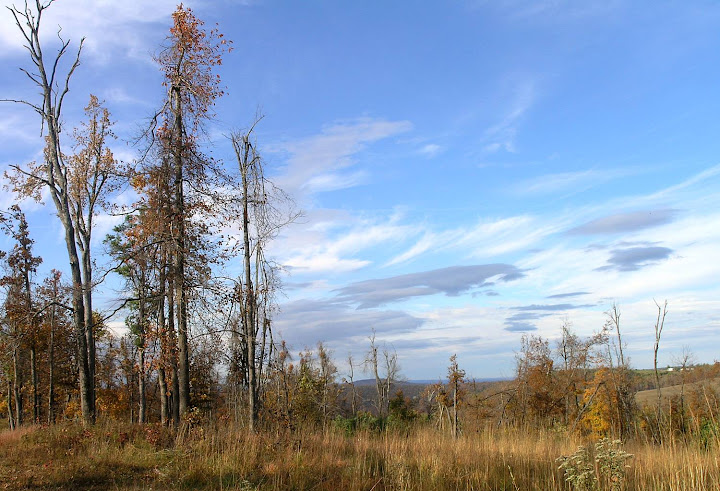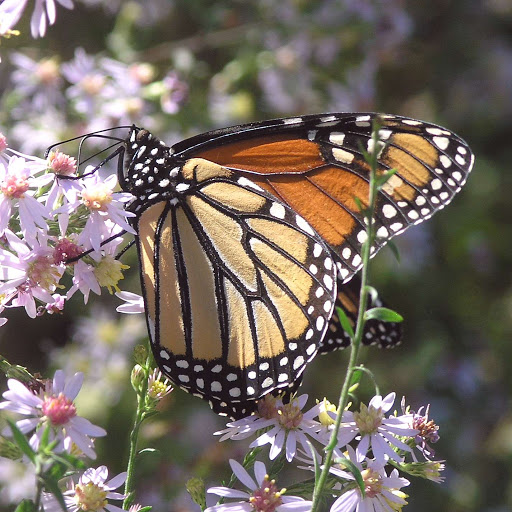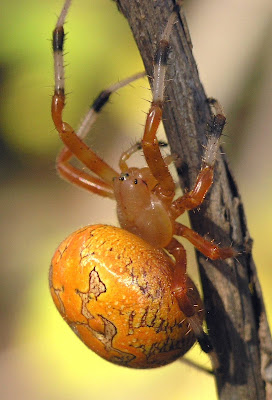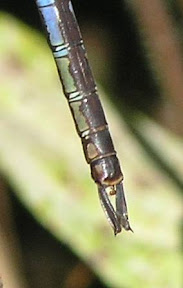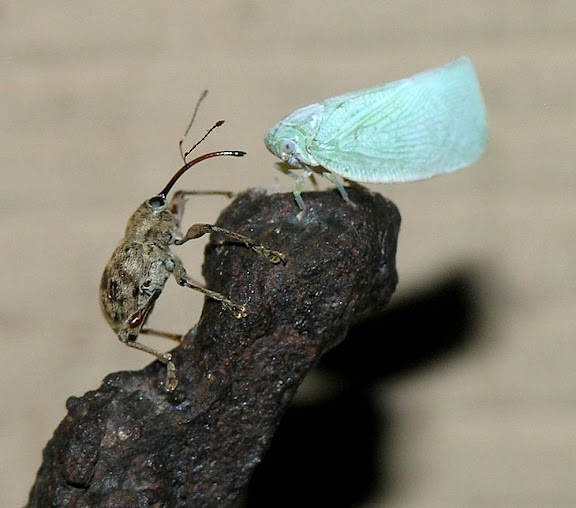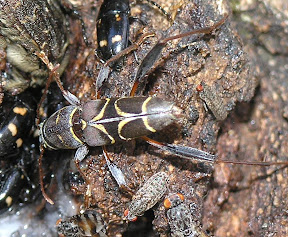Luna moths are beautiful. This individual is a male. As is the case with many moths, males have larger and more feathery antennae than females. Female Luna Moths emit pheromones. Males use their antennae to "smell" and find females. Males also have slightly longer tails. (Photo by Jo on 3/21/07.)
I happen to think Luna Moth caterpillars are also quite attractive. Their bright green color almost seems to glow. After emerging from their eggs, Luna Moth caterpillars go through five stages (instars) before pupating. The larger specimen in the photo above is in its fifth and final instar. (Photo by Marvin on 9/8/09.)
But even I have to admit: A Luna Moth pupa isn't much to look at. When a fifth instar Luna Moth caterpillar is ready to pupate, it crawls down into the leaf litter and uses it silk -- It is a Giant Silkworm Moth, after all. -- to bind several leaves together. It then spins a cocoon inside which the pupa forms. (Photo by Marvin on 9/12/09.)
I've removed most of the leaves in the shot above. You can see a little bit of the silken cocoon. I could carefully remove the pupa from the cocoon without harming it, but won't. The cocoon and leaves help protect the pupa and keep it slightly damp during the long wait until spring, so I will leave them in place.
(BugGuide has images of all stages in a Luna Moth's life cycle, including a shot of the papa without its protective cocoon.)
A little general information on Luna Moths from their BugGuide species page: In the United States, Luna Moths have been found in every state east of the Great Plains. Their primary habitat is deciduous forests. Adult moths only live about a week. They do not (cannot) eat as adult moths. Their only objective is reproduction.
Please click the logo above to participate and/or find links to more Camera Critters photos.
This work is licensed under a Creative Commons Attribution-Noncommercial-Share Alike 3.0 United States License.
.






